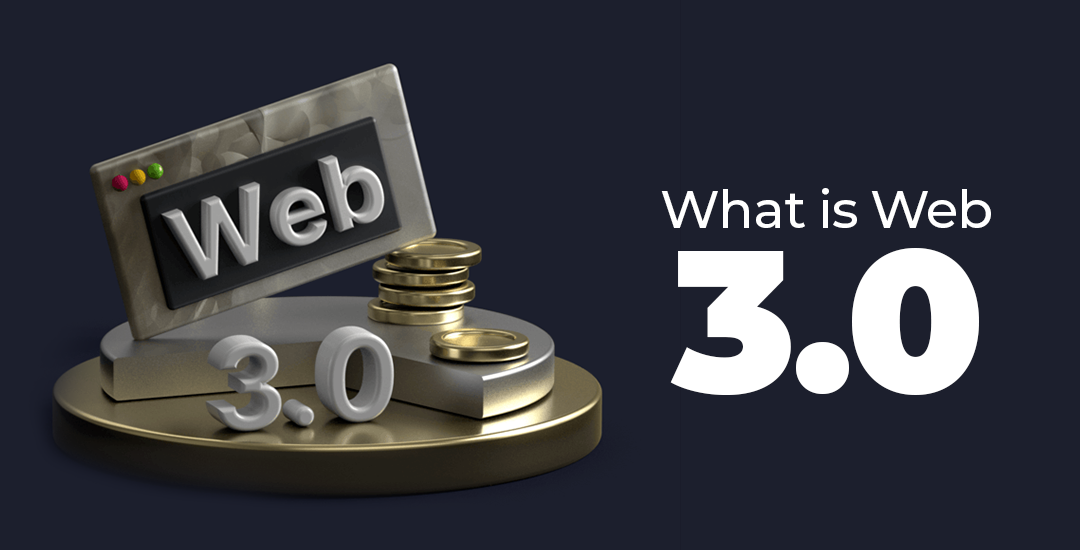


The internet is evolving into its next phase, and early birds will get to take the worm home. Are you prepared to handle the digital revolution at hand?
If you are reading this piece, know that you owe it to Tim Berners-Lee, the father of the modern World Wide Web, or the internet for short. Not only did he revolutionize the digital world, but he laid a path for the digital world to keep building upon itself, all the way up to the present, where the dawn of Web 3.0 is upon us.
So what is this Web 3.0, and how is it different from the current internet we use? For that, we need to take a quick peek at the past of the internet in the days of its inception, adolescence, and all the way up to the present.
Internet was born on January 1st, 1983; also called the Arpanet, it wasn’t much but a form of communication for computers. Early developments led to the creation of what we now refer to as Web 1.0, developed by DARPA (Defense Advanced Research Projects Agency). It was nothing more than just web pages containing images and text joined together by hyperlinks. For the most part, it was non-responsive and characterized by its adoption by big businesses.
Web 1.0 had nothing much to offer except for reading, viewing, and browsing to a certain degree; the pages were static, and there was no interactive activity. Services like Yahoo News and other read-only websites were able to make the most of it and develop a corporate presence.
Simply put, the internet we use today is defined as Web 2.0. Characterized by its rich and responsive design, it heralded the era of human interaction in the online world, responsiveness, content creation/generation, and web app development. Basically, each page on Web 2.0 is a software application that can do so much more than just display information.
This is the interactive era of the internet where users can create their own content, share it, and make it interactive for themselves and other users (posting comments, etc.). Common examples would be Facebook, Twitter, YouTube, TikTok, and other platforms of similar nature. Users can also create their own blog websites that would give them the freedom to own their own content, while the content posted on bigger social platforms is owned by them instead of the user; a major drawback of Web 2.0.
So why Web 3.0 when Web 2.0 seems nothing short of perfection? Well, where Web 2.0 is powered by a ton of programming and has its limitations (information overload, data manipulation, hacking, identification forgery, too much freedom, etc.), Web 3.0 will not only be above and beyond that but it will be powered by machine learning and big data. Ever asked Alexa or Siri for something and received a spot-on answer? Well, that’s a portion of Web 3.0 for you, semantic, but far better than what we have at present.
Not only will it be more personalized, but it will also offer better search capabilities with a far more powerful app experience than you could imagine. Best of all, security will be at the heart of it; Web 3.0 will help create a digital future where we will be living perpetually digital lives, except the experience will be 100 times intensified.
Among the major perks Web 3.0 has to offer, we have decentralization. What it means is that you are the owner of your content. If you post a video on YouTube or a post on Facebook, you are actually not the owner but the platform. Whereas on Web 3.0, thanks to decentralization, you are the owner of your own content with all of the rights. No big platform can dictate you anymore1
The next, perhaps the biggest perk of Web 3.0 is the Metaverse. With the incorporation of AR and VR, users will be able to access the Metaverse, a virtual world where they will have the freedom to develop their content, assets, and even digital property. And this is just the tip of the iceberg! Web 3.0 is in the early stages of its development, and with time, who knows where it will take us? Web 3.0 is a world of its own with unlimited digital possibilities. From assets (NFTs) to property and all the way to currency (cryptocurrency), Web 3.0 will have it all.
With that being said, let’s turn to what prospects it holds for the Pakistani talent. As a young nation where the majority of the population consists of tech-inclined youth, not only could Pakistan be one of the earliest adopters of Web 3.0 but a pioneer in its development and future expansion across the globe.
Pakistani talent has made us one of the largest exporters of digital services, with global investors realizing the latent potential that still remains untapped. From working in multinationals to new startups popping up on a daily basis, the tech space can greatly leverage the Pakistani youth. But we ourselves can become early adopters of the technology and lead the South East Asian region into the new digital era. It’s the next big thing, and if you snooze… as they say, you lose.
Buckle up, folks, the big bang of Web 3.0 could go off at any time in the coming future. Of course, the changes will be gradual but know that they will be permanent, and Pakistan can be the web 3.0 powerhouse. We need to not only educate ourselves on the up-and-coming phase of the internet but become apt at its development and deployment to establish ourselves as leaders of the new age of the internet.